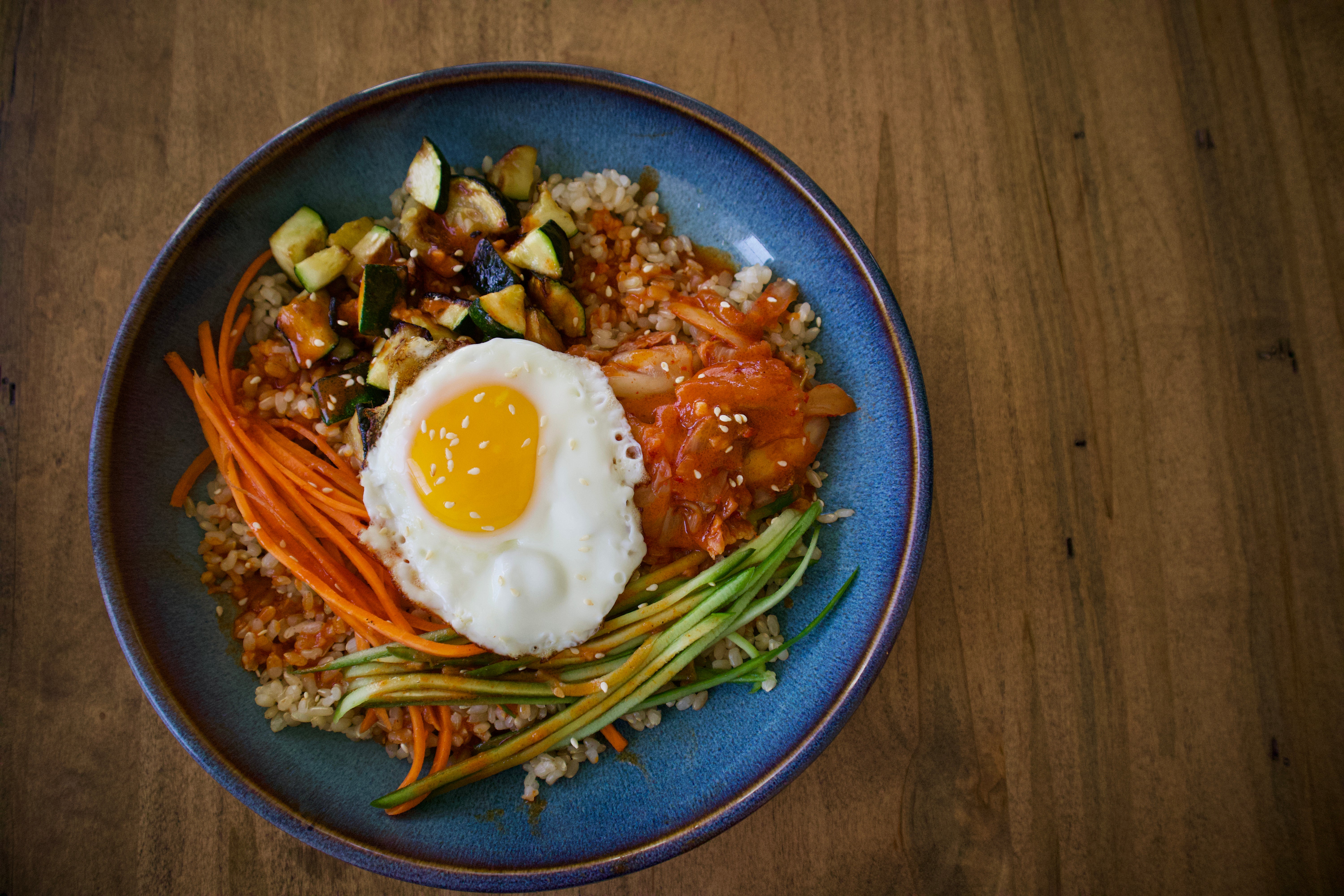Ingredients
Bibimbap-Bowl
Rice
- 2 cups, brown, cooked
Zucchini
- 1 small
Carrots
- 1 large
Cucumber
- 1 large
Oil
- 1 Tablespoon, sesame
Eggs
- 4 large
*Kimchi
- 1 cup
Bibimbap-Sauce
>>>
Garlic
- 1 clove
*Gochujang
- 2 Tablespoons (fermented chili paste)
Oil
- 1 Tablespoon, sesame
Sugar
- 1 teaspoon
Vinegar
- 1 Tablespoon, rice wine
Instructions
Step 1
Add ½ cup of cooked brown rice to each bowl.
Step 2
Chop the zucchini and set aside.
Step 3
Spiralize, juilane, or thinly slice carrots and cucumber.
Step 4
Heat 1 tablespoon of oil in a frying pan on medium-high heat. Add the zucchini and cook for 5-8 minutes or until tender and browned. Remove from heat.
Step 5
Crack the eggs into the pan, cover, and cook for 5 minutes or until the whites are cooked and yolks are runny*.
Step 6
Make the sauce: Mince the garlic and add it to a bowl or a jar with a lid. Add the gochujang, oil, sugar, and vinegar. Whisk / shake until combined.
Step 7
Prepare the bowl by topping each portion of rice with cooked zucchini, carrots, cucumber, kimchi, a fried egg and a drizzle of the Bibimbap sauce. Enjoy!
Notes
Bibimbap is a Korean rice dish. The term "bibim" means mixing rice, while the "bap" noun refers to rice. Bibimbap is served as a bowl of warm rice topped with vegetables, protein, kimchi, gochujang, or doenjang. Kimchi is a fermented cabbage. Gochujang is a spicy pepper sauce. Doenjang is a fermented bean paste. These ingredients are often found in Asian markets as well as many mainstream grocery stores. See our swap out options or seasoning guide to choose ingredients that you and your family will enjoy.
*Note: this recipe calls for an over-easy egg which is undercooked (runny yolk) and could increase risk of foodborne illness.

